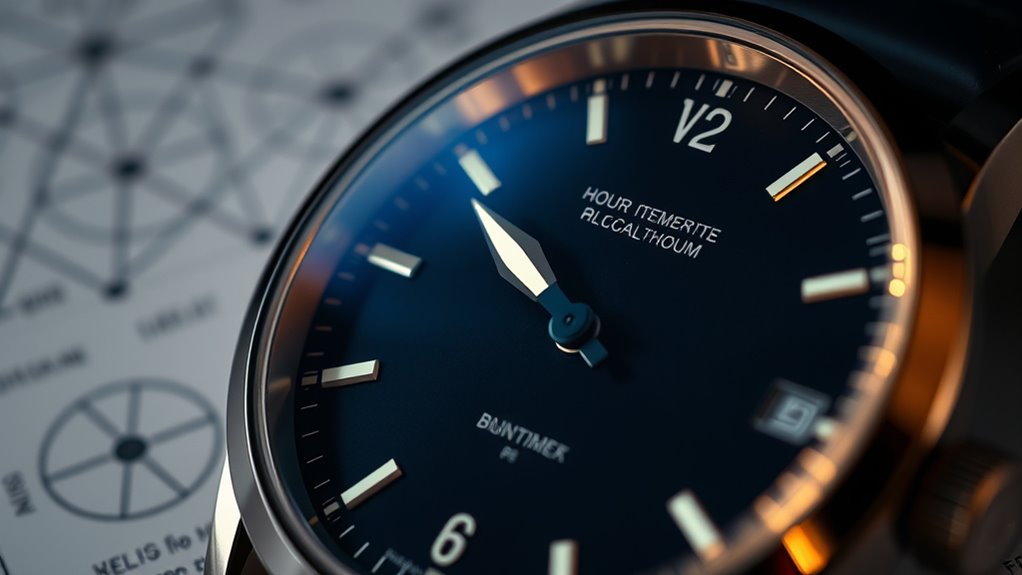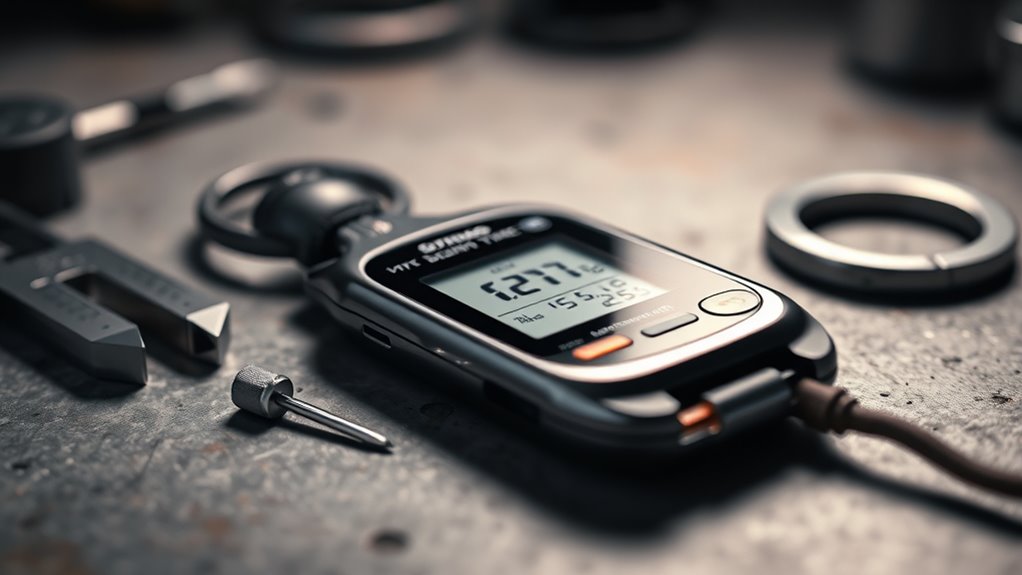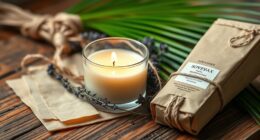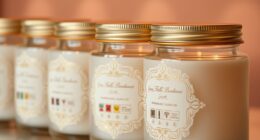Manufacturers calculate burn time by measuring how long a product takes to use up its fuel or react fully under controlled, standardized conditions. They perform multiple tests, record the burn duration, and then average the results to predict total burn hours. This process considers factors like wick size, wax type, or container shape. If you keep going, you’ll uncover how these methods help you make smarter choices about the safety and performance of your products.
Key Takeaways
- Manufacturers measure burn time by controlled test burns under standardized conditions, recording duration and fuel consumption.
- They calculate fuel efficiency by dividing initial fuel amount by burn rate to estimate total hours.
- Testing multiple burns and averaging results ensures consistent, reliable burn time estimates.
- Burn time reflects fuel management, safety, and product performance, not just brightness or intensity.
- Consumers can estimate burn hours by assessing product specifications, but actual time varies with usage and conditions.

Have you ever wondered what burn time really tells you about a candle or firework? It’s more than just a number; it’s a reflection of how long your product will last and how efficiently it uses its fuel source. When you see a label stating a candle will burn for 40 hours or a firework has a 30-second burst, you might assume that’s the straightforward measure of its lifespan. But the calculation behind these estimates involves a deeper understanding of fuel efficiency, safety considerations, and consistent testing methods.
Manufacturers determine burn time by measuring how long a product burns under standardized conditions. For candles, this includes factors like wick size, wax composition, and container shape. They carefully calculate how much fuel (wax, in this case) is consumed per minute and then project the total burn duration based on the initial amount of fuel. Fireworks are a bit more complex, as their burn time depends on the chemical composition, amount of explosive material, and the design of the fuse and shell. They often perform multiple test burns to establish an average, ensuring the product behaves predictably. Additionally, understanding fuel consumption rate helps consumers gauge how efficiently a product uses its fuel source over time.
Understanding how burn times are calculated can help you better gauge the fuel efficiency of what you’re using. A candle with a longer burn time isn’t necessarily better if it consumes wax more slowly but produces less light or heat. Conversely, a shorter burn time might indicate a more intense, efficient burn, especially if safety considerations are also met. Manufacturers aim to balance burn time with safety; a product that burns too quickly could overheat or pose a fire risk, while one that burns too slowly might not perform as expected or could produce uneven combustion.
You can also apply this understanding when choosing your own candles or fireworks. Look for products tested under consistent standards, and pay attention to how burn time aligns with the intended use. For example, if you want a candle for a dinner party, a longer burn time is desirable, but only if it maintains a steady, safe flame. Safety considerations are vital—products with unpredictable burn times or inconsistent fuel consumption can be hazardous. Always follow manufacturer instructions and consider how burn time correlates with the product’s safety features.
In essence, burn time isn’t just a simple clock running down; it’s a complex indicator of how well a product manages its fuel and ensures safety during use. By understanding the calculations behind it, you can make smarter choices, ensuring you get the most out of your candles or fireworks while keeping safety at the forefront.
Frequently Asked Questions
How Does Temperature Affect a Device’S Burn Time?
Temperature profoundly impacts your device’s burn time through thermal effects. When temperatures rise, components may heat up faster, reducing effective battery life. Conversely, colder conditions can slow chemical reactions, also decreasing runtime. To guarantee accurate readings, you should consider thermal effects and regularly calibrate your device. Proper calibration accounts for temperature variations, helping you optimize burn time and maintain reliable performance regardless of environmental changes.
Can Burn Time Be Accurately Predicted for All Battery Types?
You can’t accurately predict burn time for all battery types because battery chemistry varies widely, affecting how they discharge. Capacity estimation helps, but factors like age, temperature, and usage also influence performance. While some batteries offer more predictable burn times, others are less consistent. So, understanding the specific chemistry and capacity of each battery helps you make a better estimate, but absolute accuracy remains challenging across all types.
What Role Does Device Usage Intensity Play in Burn Calculations?
Like a knight in shining armor, your device’s usage intensity greatly impacts burn calculations. When you use your device heavily—streaming, gaming, or multitasking—its longevity shortens because the battery drains faster. Usage patterns directly influence how long your battery lasts, making it essential to manage activity levels. So, understanding your habits helps predict realistic burn times, ensuring you get the most from your device’s battery life and avoiding unexpected shutdowns.
How Do Environmental Factors Influence Actual Burn Time?
Environmental factors like humidity effects and altitude influence your device’s actual burn time. High humidity can cause moisture buildup, making batteries work harder and reducing runtime. Similarly, at higher altitudes, lower air pressure affects cooling, which can decrease efficiency. You should consider these factors when estimating how long your device lasts; adjusting expectations based on humidity and altitude helps you better understand real-world burn times.
Are There Industry Standards for Measuring and Reporting Burn Time?
You might wonder if industry benchmarks set standards for measuring and reporting burn time. While there aren’t strict universal standards, many manufacturers aim for reporting consistency by following common practices. This helps you compare products more accurately. Keep in mind, some variations exist, so always check how burn time is tested and reported to guarantee you’re making informed decisions based on reliable data.
Conclusion
Now that you understand how manufacturers decode burn time, you hold the map to this hidden treasure. Think of burn time as the heartbeat of your gear—pulsing steadily, revealing its true stamina. With this knowledge, you’re not just a bystander but the captain steering your adventure through the rugged wilderness. So, next time you check that timer, remember, you’re revealing a secret code—the story of your gear’s endurance waiting to be told.









